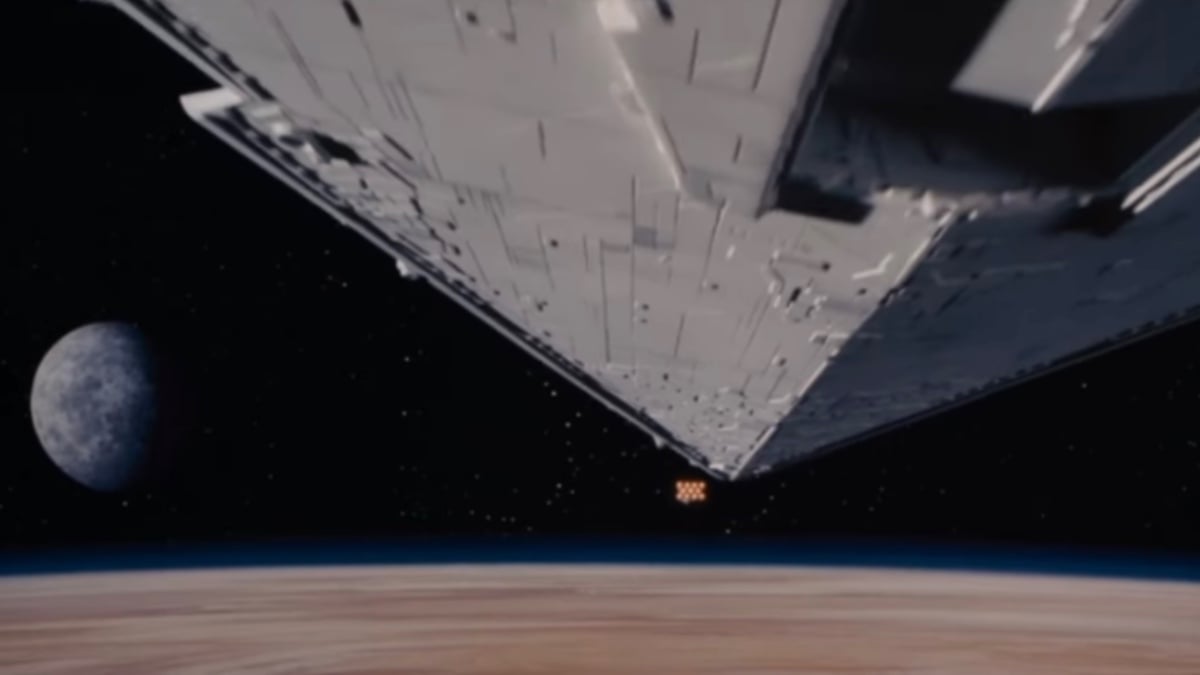One of the greatest opening shots in cinematic history has to be the opener to the original Star Wars film. After the opening crawl that explains the predicament, we are witness to a ship flying in space and fleeing from what we soon realize is a massive ship that dwarfs the original.
Suddenly, we are successfully pulled into this world (or galaxy!) and are fully onboard for the ride. Getting us to that point so early in the film, however, was something that made the creators quite nervous. Why? Well, in a way, because they had to sell the whole movie to the audience in that one shot.
Needless to say, they very much succeeded.
The innovative workers at George Lucas’ special effects company ILM (Industrial Light & Magic), sat down with Disney Plus to discuss the details of the shot as part of the 2022 Light & Magic docuseries. The overlooked series is one I’ll be writing more about since it’s rarely discussed by Star Wars fans but deserves to be. The series revealed — among other things — that George Lucas’ mother told him that he wouldn’t amount to anything.
Richard Edlund, who was the main special effects cameraman at ILM for Star Wars made it clear how important that shot was. “Something that really made me quake in my shoes was the opening shot because if the opening shot didn’t grab the audience and convince them that they gotta watch this movie, we were in trouble.”
Georges Lucas’ idea for pulling off the shot was to actually build an enormous Star Destroyer — one that would require the crew to climb up on ladders in order to detail — but Edlund thought that using a smaller model of that they already had of that type of ship would still be able to give the same effect. The concern was that a smaller model would have less detail but Edlund decided that the 4-foot Star Destroyer they had could be further detailed and then it was just a matter of filming it up close and in focus. So, Richard had his crew work on detailing the bottom of that smaller model — since the bottom of it would be what’s seen in the opening shot. He also had someone build a small rebel ship the size of a cigarette and that is what you see in the film.
Edlund explained that filming the smaller model allowed for flexibility, especially compared to a larger and more stationary model. He explained that this helped him be able to turn the model to wherever he needed it to be for the camera and not vice versa. “Basically, I shot it upside down.”
This made it easier for Edlund to focus on the ship’s detail from shooting above the model and it also likely helped with lighting. He explained, “I flipped the Star Destroyer and got it level so the lens was basically 1/32 of an inch off the model and it was actually scraping it at a couple points.”
Edlund recalls the reaction everyone had the next day when they watched the footage back for the first time, claiming that everyone at ILM was shocked with how good it came out.
John Dykstra, ILM Supervisor, noted that such a reaction — which would thankfully be the same for the audience — was a key element of the film. He praises Edlund and the crew’s work on it by adding;
“The entire ship is in focus from closest thing to the camera to the furthest thing from the camera. It’s a really critical component to establishing scale and the model had little doors and windows – human scale things that tell you how big it is, right? So it’s those kind of subliminal clues and an understanding of how to use them that makes it artistry as opposed to simple mechanics.”
Edlund himself perhaps sums it up best by simply saying, “It’s like magic, really,” which is pretty appropriate considering the company is not called Industrial Light & Ordinary Stuff.

